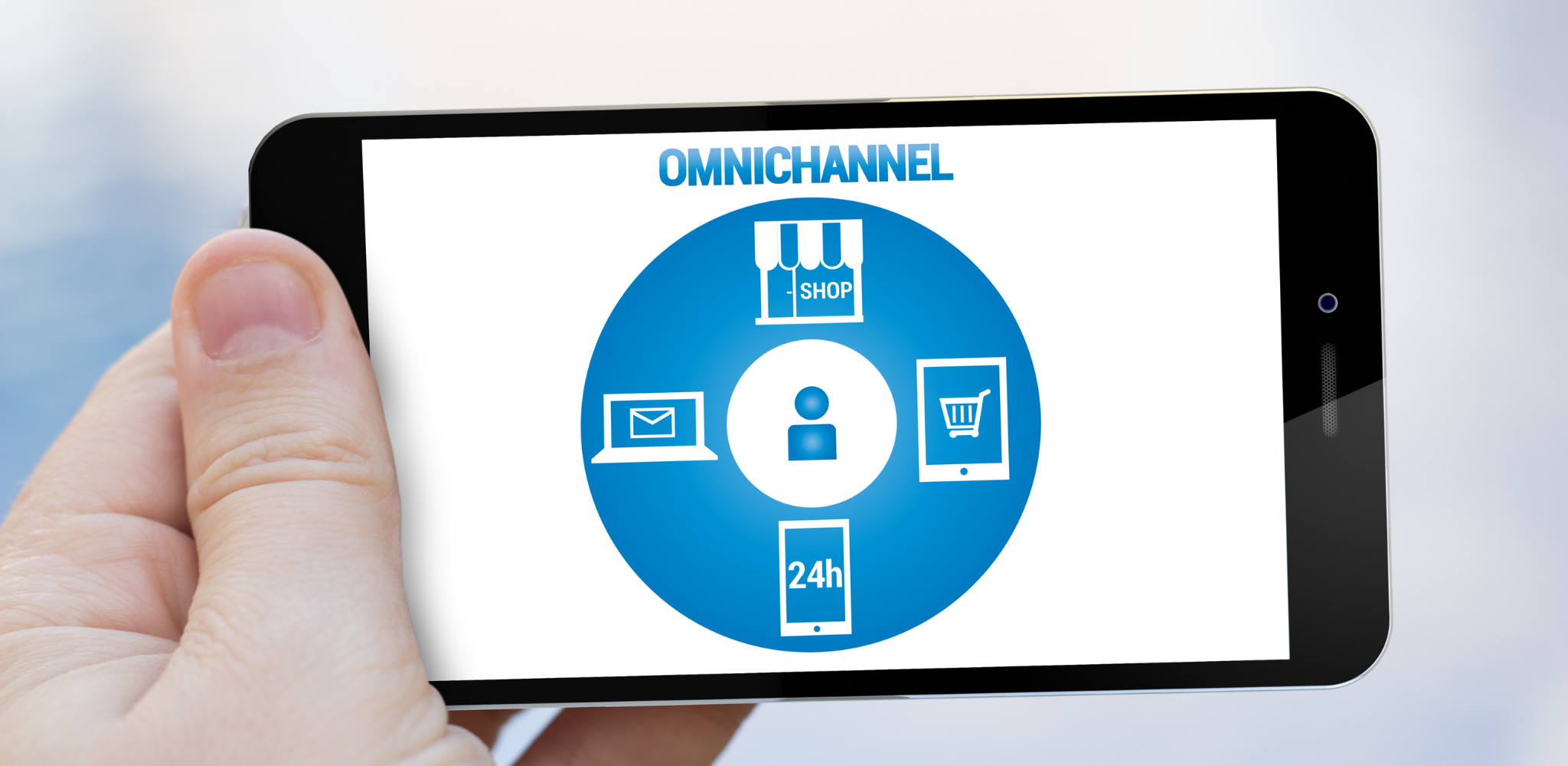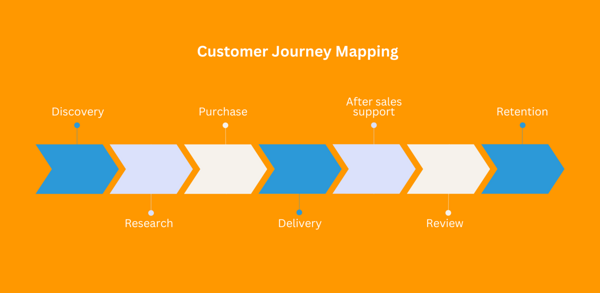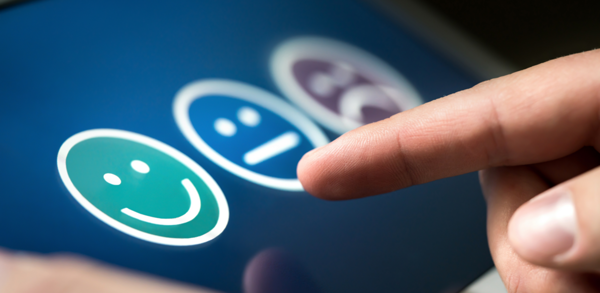Multiple experts from McKinsey & Company, including Senior Partner Brian Gregg, stressed back in 2021 how omnichannel was fast becoming a necessity for a business’s survival. And in 2022, a survey conducted by Sailthru revealed that customers ranked omnichannel experiences as a 'must-have' expectation. The trend for tailored, omnichannel journeys has only increased since then.
But what exactly does an omnichannel customer experience involve? How does it differ from multichannel? And how can business owners, marketers and CX professionals leverage omnichannel strategies effectively? Read on to find out.
What is an omnichannel customer experience?
Omnichannel customer experience means to deliver an integrated, seamless experience for all customers across all channels. Let's break this down in more detail...
Customer experience is the overall perception and feelings that customers have in response to everything a business does when interacting with them throughout their buying journey. This includes every touchpoint via marketing, sales, and customer service.
Omnichannel is a term used in marketing, communications, and sales strategies. It refers to providing a unified and seamless customer experience by using all channels together cohesively.
So, an omnichannel customer experience refers to how customers feel as they interact with a business when responding to advertising, making a purchase or resolving a problem across multiple online and offline channels that seamlessly connect. The concept is frictionless and involves putting the customer at the core of the experience.
One brand that's mastered omnichannel down to the finest details is Disney. The customer is entirely centric to everything Disney offers. You can book a trip via Disney's website or app. Then, you can explore the parks online to plan the attractions and restaurants you want to visit.
Upon arrival, the My Disney Experience app can be used to enhance your trip with a personalised itinerary, resort maps, ride waiting times tracker, contactless dining experiences, the Disney PhotoPass Service and more. The icing on the cake is the Disney MagicBand – a collectable and customisable wristband that acts as your hotel room key, virtual theme park tickets and more.
Is omnichannel the same as multichannel?
In short, no. An omnichannel customer experience involves connected channels, while a multichannel experience involves several standalone channels that work independently of each other. Here's a real-life example from Messente's Head of Marketing, Taavi Rebane, which demonstrates how the customer experience can be disjointed in a multichannel situation.
"A few years ago, I experienced issues with my internet provider. I first reached out by email, and after having no response by the following day, I submitted a help request ticket online. I then received a holding email saying my ticket was in a queue. I couldn't wait any longer, so I texted customer support, to which I received an immediate response. Within an hour, my internet was restored. However, two days later, I got a reply to my email and support ticket asking for further information to solve my internet connectivity problem, even though it had been resolved. The dots just hadn't been joined up by customer service and technical support, which was extremely frustrating."
Why you need to provide an omnichannel experience for customers
Adopting an omnichannel approach is essential if you want to cater to the modern consumer using a range of channels. Here are some specific benefits that omnichannel can bring to customers and your business.
Seamless customer journey
An omnichannel approach enables customers to switch easily from one channel to another. They might start a conversation on WhatsApp and transfer to a phone call or email, but from their perspective, the process is smooth and streamlined with no hiccups. The service or sales agent knows exactly what stage of the customer journey they're at and can access the account history to continue the conversation without the customer having to repeat themselves. The omnichannel approach can help you gather more leads as well.
Mastering the switch between online and offline touchpoints is tricky – many businesses fail at this – but it's essential to get it right to deliver a stellar customer experience. Katria Komp, Messente's Demand Generation Specialist, explains: "A true omnichannel experience lets customers seamlessly hop from one channel to another if that's what they want to do. In retail especially, it's common for customers to browse a website, add something to their cart and then visit a physical store to complete their purchase. An omnichannel experience involves knowing where customers are in their journey and being proactive to their needs, so in this case, an example would be to cancel abandoned cart notifications because the customer has already bought the item."
Better customer engagement
Utilising all available channels seamlessly increases the likelihood of customers being willing to approach and engage with you. With fewer roadblocks, your business will come across as accessible and responsive.
An omnichannel experience allows you to reach customers on their preferred channels and gives you intelligent data insights, which you can use for better targeting. You'll be able to pitch the right message to the right customers at the right point in their journey and see which campaigns deliver the most value for them – and your business.
Maximum customer satisfaction
A streamlined and consistent experience leads to higher customer satisfaction scores. You'll be able to align your messaging, brand visuals, and service quality with your omnichannel strategy, making it easier for customers to use your business.
For example, you can deliver support on the channel that's most convenient for customers and see history notes from previous conversations on other channels. Customers who buy a product online and want to return it could drop it off at a nearby physical store rather than package the parcel and take it to a post office. And product discovery can be hugely improved as customers can search for products at whichever touchpoint is available to them at any moment.
Higher retention rates
Better customer satisfaction leads to loyal customers who actively seek to buy from your business again and are happy to recommend your brand to others. An omnichannel customer retention strategy amplifies your reach, enabling you to target existing customers with highly personalised, consistent offers - which you can design using data insights collected from multiple touchpoints.
Other operational and strategic benefits
An omnichannel strategy will help you gather more comprehensive data, which aids detailed analysis and improved decision-making. It'll be much easier to understand what works for your customers and what doesn't.
In turn, you'll optimise your resource allocation and focus your efforts on the activities that drive positive results. Marketing, sales, and service teams will also benefit through better collaboration and increased productivity. All teams will have access to the same customer profiles, and because omnichannel software solutions typically come with powerful automation features, repetitive tasks (such as onboarding new customers and answering common questions) can be avoided. Staff morale will naturally improve due to better engagement and positive customer interactions.
Seven key components of an omnichannel strategy
A solid omnichannel customer experience strategy includes connected channels, message consistency, customer journey mapping, hyper-personalisation, the right software to manage communications and more. Let's look at these key components in detail:
1. Multiple channels of communication and engagement
An omnichannel strategy includes a mix of channels, including SMS messaging, email, social media, live chat, a website, in-person interactions and OTT messaging. They should all be integrated and work as one, not as standalone channels.
This isn't easy to do right off the bat, so it's best to start with a few channels and work on connecting those first, then build from there. For example, you could bring together your website live chat function and social media channels into a shared inbox, enabling you to see all customer and prospect messages in one place. Another option is to connect your social media channels to your CRM to keep track of interactions and engagement. Focus on establishing a strong presence where most customers already are - that might be on Instagram, TikTok or email via your newsletter list.
2. Consistency in your messaging
Your communications must be consistent and aligned with your brand voice and company values so that they resonate with your target audience. Consider your visual branding (logos, colour palette, font styles and images) and how that might work across your different channels to deliver a strong brand identity.
Message consistency isn't just about the visual aspects or content you want to convey; it's also about timing. It's vital to send messages at the right time when your audience is most likely to expect and respond to them. Utilise automation and scheduling tools to ensure your timings stay on track, especially during busy periods when you need to focus on other critical operational tasks.
3. Tracing out the customer journey
An omnichannel customer experience aims to provide what the customer needs when they need it. To facilitate this, you'll need to map out the entire customer experience journey, which involves the following steps:
Gathering data - work out how customers interact with you, which channels they use, what they want to know, and the typical length of these interactions. This will help you understand initiated and responsive engagements across key touchpoints and see which channels are popular and which aren't.
Optimising touchpoints - consider how each touchpoint affects customers. Is it easy for them to contact your business about a problem on each channel? How do they find product information quickly? Are they receiving the same consistent information when they perform a search on your website or ask a question on social media?
Identify key stages of the customer experience - the broad end-to-end experience might include product discovery, research, purchase, delivery, after-sales support, review and retention.
Start mapping - plot and trace the customer experience you want to achieve, taking into account the decisions customers might make during each interaction and the tasks and information interconnected departments are responsible for.
4. Unified platform for handling customer interactions and data
Another vital aspect is creating and maintaining a centralised customer information repository. This enables cross-functional collaboration, data accuracy, security and access control, and provides a 360° view of each customer at every stage of their journey.
Your chosen platform should be scalable, adaptable, customisable and integrate with other vital systems. For instance, you could use a customer relationship management (CRM) platform that records and stores customer data and interactions from phone calls, chat messages, email marketing and mass texting campaigns. It should also incorporate advanced reporting and analytics and have a user-friendly dashboard that indicates performance at a glance.
5. Hyper-personalisation
Hyper-personalisation is all about connecting meaningfully with customers. According to Deloitte, it's the most advanced way businesses can tailor their marketing to individual customers and is achieved by creating custom and targeted experiences using a combination of data, analytics, AI, and automation.
An omnichannel customer experience involves the best possible audience segmentation so you can determine what your customers need and want and proactively deliver authentic interactions that exceed their expectations. This segmentation can be aided through social listening, collecting individual feedback, and utilising customer data insights.
Hyper-personalisation can be applied at each customer journey stage through personalised communications and webpages, tailored discounts and product recommendations, promotional text messages, targeted online ads and more.
6. Adaptable UI and UX design
Going omnichannel means designing fluid interactions across each channel without compromising on consistency. This includes considering what devices customers use and adapting your message to work across all of them.
Imagine how you might launch a new product via your website, SMS, email and social media, ensuring message and branding consistency despite differences in content format, channels, and devices. You'd need to provide a user-centric design across the entire experience, including:
Intuitive website navigation and layout.
Familiar visuals (colours, fonts and media formats) across all social media platforms and the website.
Call-to-action copy or buttons in places customers will notice.
Consistent content on all channels.
7. Continuous improvement
Last, but not least, it's crucial to set up proper feedback mechanisms so you can continue to improve the customer experience across all channels. Send out surveys, request reviews on Facebook, Google and TrustPilot, and ask for testimonials that you can publish on your website. Obtaining customer feedback should be a built-in process after every purchase.
With marketing campaigns, conduct frequent (but careful) A/B testing and experimentation. Measure performance across all channels using key CX metrics and KPIs, such as customer satisfaction scores (CSAT), net promoter scores (NPS), and customer churn rates (CCR).
Go omnichannel for a cohesive customer experience
An omnichannel customer experience should stretch seamlessly across all online and offline touchpoints and meet each customer's needs and expectations as they navigate their journey from discovery to after-sales support and retention. It involves integrating all available communication channels so they act as one.
Omnichannel differs from multichannel as the latter involves each channel being managed separately. A multichannel customer experience can end up being disjointed because customer information exists in silos.
In contrast, an omnichannel experience is holistic and puts the customer at the core of the business. Each interaction is consistent regardless of where the customer is and which device they use. This consistency helps build meaningful and personalised connections, leading to increased customer satisfaction and loyalty.
Wondering what to read next? Check out the Messente blog to learn about the latest developments in business messaging.







